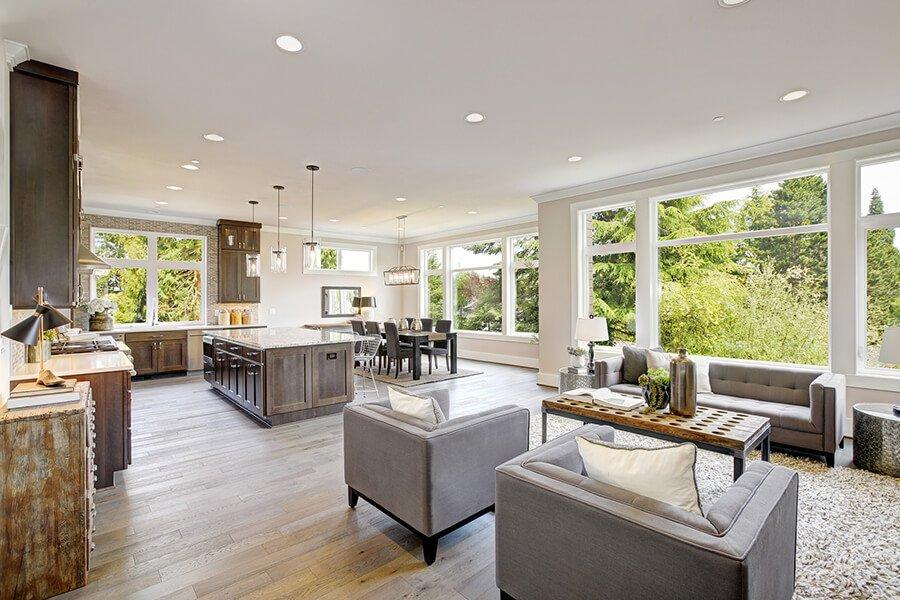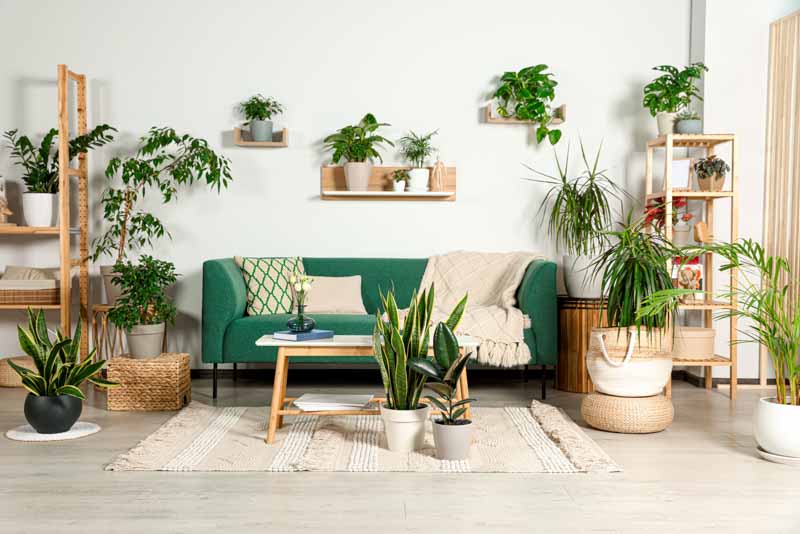Natural light plays a significant role in Canadian interior design, enhancing aesthetics, improving functionality, and positively impacting health and well-being. With Canada’s distinct seasons and varying daylight hours, incorporating and maximizing natural light is essential for creating bright, welcoming, and energy-efficient spaces. Here’s a guide to understanding the importance of natural light and how to make the most of it in your home.

Why Natural Light Matters in Interior Design
Natural light isn’t just about aesthetics—it offers numerous benefits:
- Improved Mood and Health: Exposure to natural light boosts serotonin levels, improving mood and reducing stress.
- Energy Efficiency: Maximizing daylight reduces dependence on artificial lighting, lowering energy bills.
- Enhanced Interior Aesthetics: Sunlight enhances colors, textures, and the overall ambiance of a room.
- Connection to Nature: Natural light fosters a sense of openness and connects indoor spaces to the outdoor environment.
Challenges of Natural Light in Canada
Canadian homeowners face unique challenges when it comes to natural light due to:
- Shorter Days in Winter: Limited daylight hours can make homes feel dark and gloomy.
- Cold Weather: Drafty windows may discourage opening blinds or curtains, restricting light.
- Intense Summer Sun: Too much sunlight can lead to overheating and glare during the summer months.
Addressing these challenges through thoughtful design and practical solutions is key to maintaining a bright and comfortable home year-round.
Tips to Maximize Natural Light in Canadian Homes
1. Choose Large, Strategically Placed Windows
Investing in larger windows or rethinking window placement is the most effective way to increase natural light.
- South-Facing Windows: In Canada, south-facing windows capture the most sunlight throughout the day.
- Clerestory Windows: These high windows let in light while maintaining privacy.
- Bay or Bow Windows: These windows not only let in more light but also create additional seating or storage space.
Tip: Opt for energy-efficient, double-glazed windows to reduce heat loss in winter and keep your home insulated.

2. Incorporate Skylights and Solar Tubes
Skylights and solar tubes are excellent additions for areas where wall windows aren’t an option.
- Skylights: Ideal for kitchens, bathrooms, and living rooms, skylights flood rooms with overhead light.
- Solar Tubes: These smaller, more affordable alternatives to skylights are perfect for hallways or closets.
Pro Tip: Install skylights with UV-blocking glass to protect your furniture and flooring from sun damage.
3. Use Light, Reflective Colors
Color choices can amplify the effect of natural light.
- Walls and Ceilings: Paint walls and ceilings in light, neutral shades like white, cream, or pastel tones to reflect sunlight.
- Flooring: Light-colored wood, tiles, or rugs enhance brightness in a space.
- Decor: Use mirrors, metallic accents, or glossy finishes to bounce light around the room.
4. Opt for Minimal Window Treatments
Heavy curtains and blinds can block valuable sunlight.
- Sheer Curtains: Allow light to filter through while maintaining privacy.
- Light-Colored Blinds: Choose light-colored, lightweight blinds that can easily be adjusted.
- No Curtains: In secluded areas, consider skipping curtains altogether to maximize exposure.
5. Position Furniture for Maximum Light
Furniture placement can significantly impact how light flows through a room.
- Avoid Blocking Windows: Arrange furniture so it doesn’t obstruct light sources.
- Reflective Surfaces: Place mirrors or glass-top tables near windows to amplify sunlight.
- Low-Profile Furniture: Opt for lower furniture to avoid casting shadows and blocking light pathways.
6. Add Indoor Plants
Indoor plants thrive in natural light and enhance the overall ambiance of a room.
- Light-Loving Plants: Choose plants like fiddle leaf figs, succulents, or pothos that thrive in bright areas.
- Placement: Arrange plants on windowsills, shelves, or corners to make the most of available light.
Eco-Friendly Idea: Rotate plants seasonally to ensure they receive adequate sunlight during shorter winter days.

7. Incorporate Glass and Open Spaces
Glass elements and open layouts allow light to flow freely through your home.
- Glass Doors: Replace solid doors with glass-paneled options to brighten dark hallways or rooms.
- Open-Concept Layouts: Create seamless transitions between spaces to share natural light across the home.
- Interior Windows: Install interior windows or glass partitions to channel light into windowless areas.
8. Invest in Smart Lighting Systems
While maximizing natural light is the goal, complementing it with smart lighting systems ensures your home remains bright after sunset.
- Daylight-Matching LEDs: Use adjustable LEDs that mimic natural daylight to maintain a consistent ambiance.
- Dimmers and Sensors: Install dimmers or motion sensors to balance natural and artificial light seamlessly.

Benefits of Maximized Natural Light
- Eco-Friendly Homes: Reduced reliance on artificial lighting decreases energy consumption.
- Better Productivity: Sunlit spaces improve focus and efficiency, making them ideal for home offices.
- Enhanced Property Value: Homes designed with ample natural light are more attractive to buyers and renters.
Final Thoughts
Natural light is a powerful design element that transforms Canadian homes into bright, welcoming, and energy-efficient spaces. By incorporating large windows, light-reflective surfaces, and strategic layouts, you can make the most of available daylight year-round. Whether you’re renovating or simply rearranging, focusing on natural light will enhance both your home’s beauty and functionality.